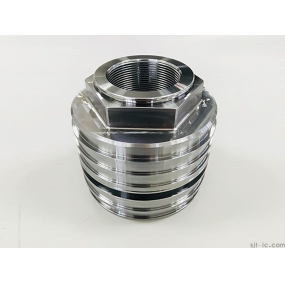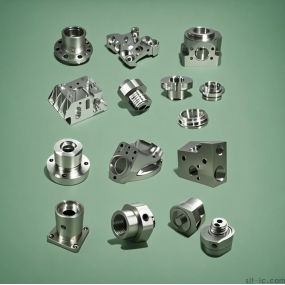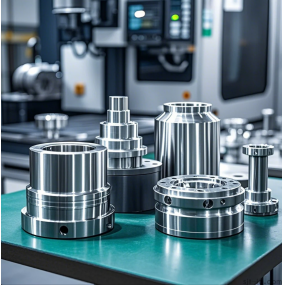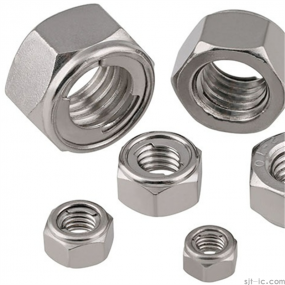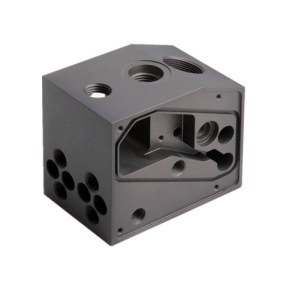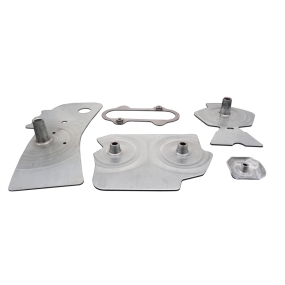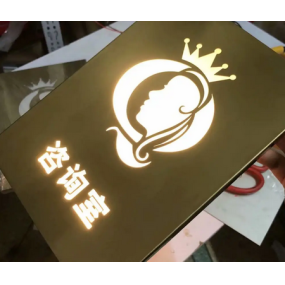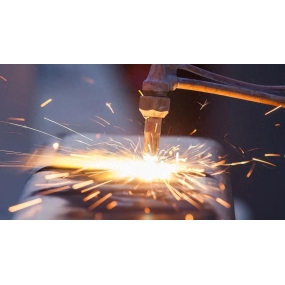Hi everyone! I’m the editor, and today let’s talk about the topic of "cost composition of high-speed CNC lathe machining" — many friends new to this industry often wonder: "Why are there so many items on the quotation sheet? 💰 Where exactly does the cost go?" Actually, the cost of high-speed CNC Machining isn’t just a simple "machine startup fee"; it hides three core components behind the scenes: equipment, materials, and processes.
🔍 I. Equipment Costs: Why Is High-Speed CNC "Money-Consuming"?
Hardware investment for high-speed CNC lathes accounts for a large portion of the cost! For example:
- **Spindle System**: Direct-drive or electric spindles with a rotational speed of ≥10,000 rpm offer high precision but come with a high price tag (a single piece of equipment often costs hundreds of thousands of yuan).
- **Multi-Axis Interpolation**: 5-axis machines are over 40% more expensive than 3-axis ones, but they can complete complex curved surface machining with a single setup, eliminating subsequent processes.
- **Maintenance Costs**: High-speed cutting causes significant wear to guideways and ball screws; regular calibration and tool replacement add another hidden expense.
💡 Editor’s Opinion: Don’t just look at the unit price of the equipment! Long-term precision stability is more important than saving money upfront — repairing a low-quality machine can cost you 100,000 yuan in losses at once!
⚙️ II. Material Costs: How to Choose Materials to Save Money?
The machining difficulty varies drastically between different materials:
| Material Type | Machining Efficiency | Tool Wear | Cost Impact |
|---------------|----------------------|-----------|-------------------|
| Aluminum Alloy | ⭐⭐⭐⭐⭐ | ⭐⭐ | Low (easy to machine) |
| Stainless Steel | ⭐⭐⭐ | ⭐⭐⭐⭐ | Medium (coolant required) |
| Titanium Alloy | ⭐⭐ | ⭐⭐⭐⭐⭐ | High (double the wear) |
👉 Money-Saving Tip: Conduct small-batch test cuts to verify parameters! For example, using coated cemented carbide tools for stainless steel can extend tool life by 30%.
🤔 III. Process Costs: Are There "Hidden Tricks" in Programming and Operation?
The complexity of programming directly drives up hourly labor costs! For instance:
- **3D Curved Surface Machining**: Requires 5-axis interpolation programming; the code volume is 50% more than that of planar machining, and the technical threshold is higher.
- **Precision Requirements**: Machining with a tolerance of ±0.01mm costs twice as much as ±0.1mm — every level of precision improvement increases processing time by 20%.
- **Batch Effect**: The average cost for a single prototype is 500 yuan, but for a batch of 100 pieces, the unit cost can be spread out to 120 yuan (a 76% savings)! 📉
💡 Editor’s Suggestion: Provide clear drawings and precision requirements to reduce communication costs — vague requirements will make factories charge an "additional risk fee"!
📊 IV. Hidden Costs: Pitfalls Newcomers Must Avoid!
- **Fixture Design**: Special-shaped parts require custom fixtures (costing 500-2,000 yuan per set).
- **Quality Inspection Investment**: A single inspection with a coordinate measuring machine (CMM) costs 200 yuan, but it saves you from the risk of rework and scrapping!
- **Test Cut Waste**: Consumables for first-piece debugging account for 10% of the cost; the larger the batch, the lower this proportion becomes.
🚀 Industry Data: High-quality suppliers help customers reduce costs by 30% through process optimization — such as replacing part of EDM (electrical discharge machining) with milling!
❓ V. FAQ: Helping You Break Down the Quotation Sheet
Q: Why is Factory A’s quote for the same part 50% higher than Factory B’s?
A: The difference may lie in equipment precision and process solutions! 5-axis machines can machine complex structures in one go, while 3-axis machines require multiple setups — which triples the processing time!
Q: How to judge if a quotation is reasonable?
A: Ask the supplier for a detailed breakdown! A reasonable ratio is 30% for material costs, 40% for labor costs, and 30% for management and profit.
Q: How to save money on small-batch orders?
A: Combine orders! Gather orders of the same material to share machine startup time, which can spread out fixed costs.
💎 Editor’s Random Thoughts
Cost control for high-speed CNC machining is essentially a technical balance — investing in good equipment and processes is actually more cost-effective than haggling over prices! After all, a 0.1mm precision deviation could lead to the scrapping of an entire batch 😅.
Finally, here’s a data point: In 2024, the operation and maintenance costs of high-end CNC equipment increased by 15%, but intelligent process optimization reduced the average machining fee by 8% instead! Therefore, choosing the right supplier is ten times more important than bargaining for a lower price.


 Spanish
Spanish Arabic
Arabic French
French Portuguese
Portuguese Belarusian
Belarusian Japanese
Japanese Russian
Russian Malay
Malay Icelandic
Icelandic Bulgarian
Bulgarian Azerbaijani
Azerbaijani Estonian
Estonian Irish
Irish Polish
Polish Persian
Persian Boolean
Boolean Danish
Danish German
German Filipino
Filipino Finnish
Finnish Korean
Korean Dutch
Dutch Galician
Galician Catalan
Catalan Czech
Czech Croatian
Croatian Latin
Latin Latvian
Latvian Romanian
Romanian Maltese
Maltese Macedonian
Macedonian Norwegian
Norwegian Swedish
Swedish Serbian
Serbian Slovak
Slovak Slovenian
Slovenian Swahili
Swahili Thai
Thai Turkish
Turkish Welsh
Welsh Urdu
Urdu Ukrainian
Ukrainian Greek
Greek Hungarian
Hungarian Italian
Italian Yiddish
Yiddish Indonesian
Indonesian Vietnamese
Vietnamese Haitian Creole
Haitian Creole Spanish Basque
Spanish Basque

